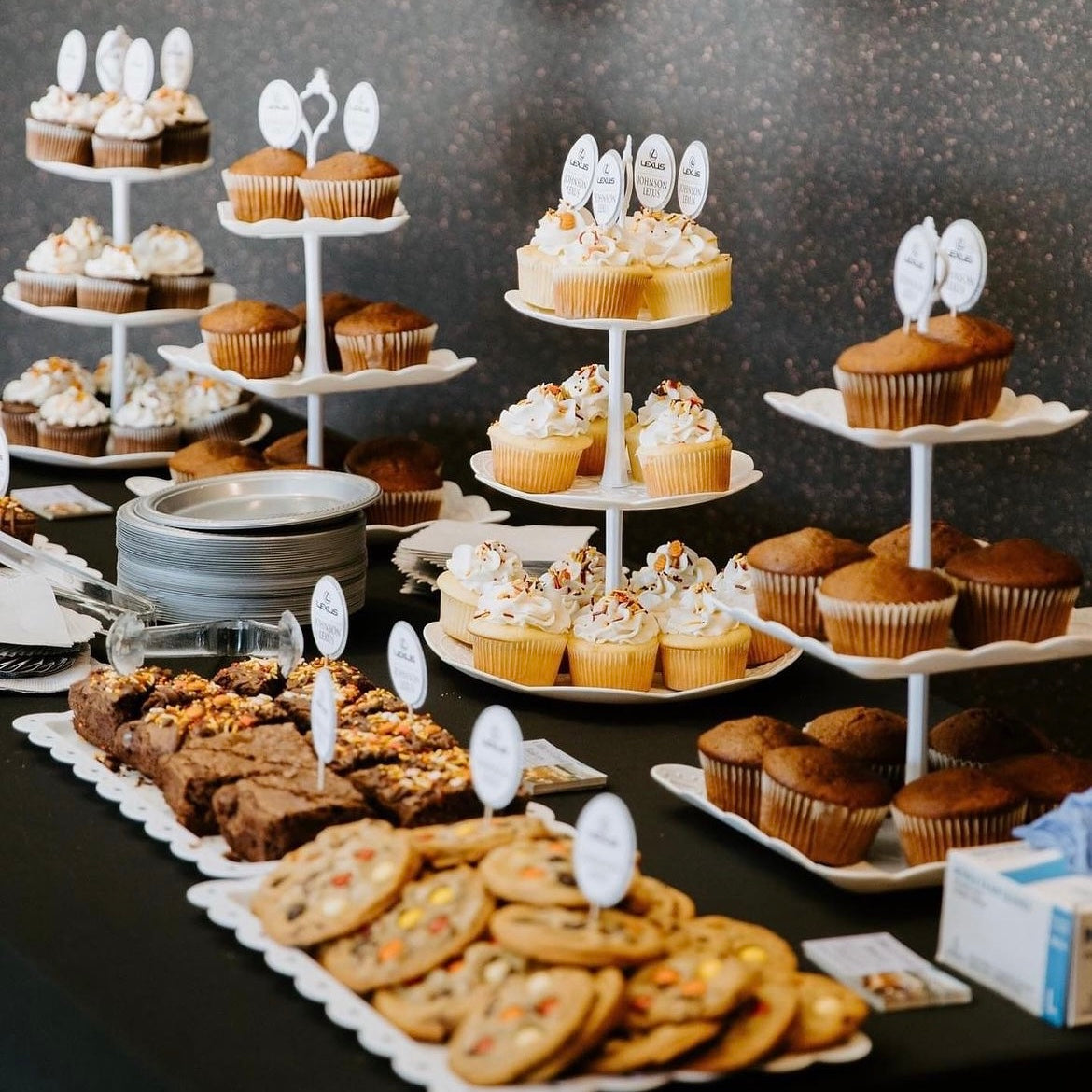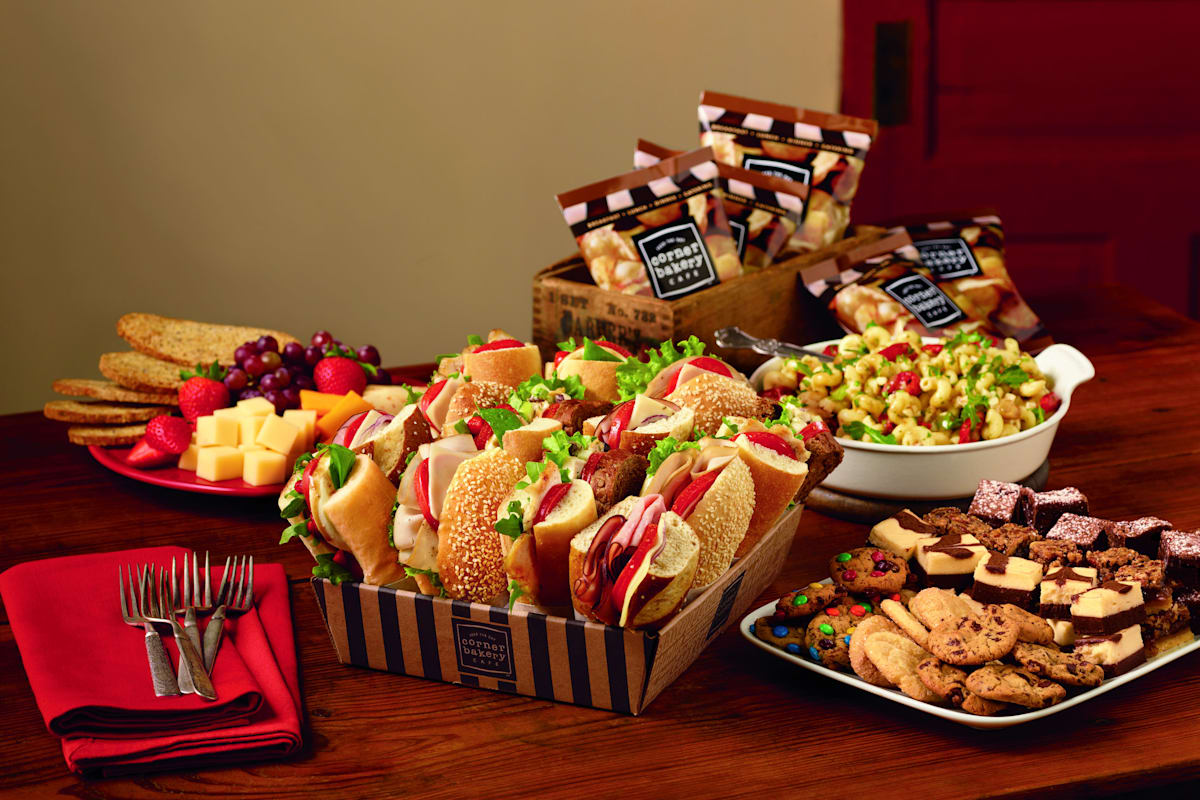Top-Rated Bakery Catering Maddington for Delicious Treats
Top-Rated Bakery Catering Maddington for Delicious Treats
Blog Article
Understanding the Art of Bakeshop Products: From Newly Baked Breads to Tempting Pastries and Finger Foods
The elaborate art of bakeshop items incorporates a spectrum of techniques and components that transform fundamental parts right into culinary thrills. From the scientific research behind the perfect loaf of bread, where fermentation and gluten development play crucial roles, to the finesse required for producing layered pastries, each element exposes an engaging story of workmanship. Furthermore, the adaptability of finger foods highlights how flavor and structure can be skillfully incorporated to involve diverse taste preferences. As we check out these aspects, one might wonder: what underlying principles regulate the success of these cherished developments?
The Scientific Research of Bread Making
At the heart of every loaf of bread exists an interesting interplay of chemistry and biology. The process of bread making starts with the combination of flour, water, yeast, and salt-- each component playing an important role in the end product. Flour has proteins, largely glutenin and gliadin, which, when blended with water, kind gluten (Finger Food Catering Maddington). This flexible network is vital for capturing gases produced throughout fermentation.
Yeast, a living organism, ferments the sugars present in the flour, creating carbon dioxide and alcohol at the same time. The co2 gas creates bubbles in the dough, creating it to increase and create a light structure. The temperature and humidity during fermentation considerably affect yeast activity and, consequently, the bread's flavor and structure.

Learning Pastry Methods
How can one attain the delicate equilibrium of texture and taste that defines phenomenal pastry? Understanding pastry methods requires a deep understanding of components, methods, and the scientific research behind them. Fundamental to this craft is the choice of top quality active ingredients-- flour, butter, sugar, and eggs-- each playing a vital role in the last item's flavor and appearance.
The method of lamination, which entails folding layers of dough and butter, creates the wanted flakiness in pastries like croissants and puff bread. Precision in temperature level is important, as butter needs to stay cold to make sure optimum layers. Correct mixing methods, such as the creaming method for cakes, make sure also consolidation of air and fat, resulting in a light and ventilated crumb.
Additionally, keeping the best moisture degrees during baking can significantly impact the end result, making sure that breads climb appropriately and attain that golden-brown finish. Lastly, the art of bread additionally requires patience and practice; each attempt improves one's skill and understanding of the elaborate balance required to create irresistible pastries that thrill the detects. Mastery in these techniques inevitably identifies a skilled bread cook from an amateur.
Sorts Of Finger Foods
The globe of culinary delights expands past pastries to encompass a broad array of finger foods, which are commemorated for their ease and adaptability. These bite-sized treats are perfect for celebrations, supplying a variety of flavors and textures that accommodate diverse palates.

On sites the sweeter side, small tarts and bite-sized cupcakes provide a fascinating finish to any kind of meal, interesting those with a craving for sweets. Cheese and charcuterie boards offer as an innovative choice, enabling visitors to customize their bites with an array of meats, fruits, nuts, and cheeses.
Taste Profiles in Cooking
Baking is an intricate dance of taste accounts that combines wonderful, savory, and umami notes to produce an unified experience for the palate. Understanding these profiles is essential for bakers seeking to raise their productions.
Sweetness commonly offers as the structure in baked goods, with sugars, fruits, and natural sweeteners boosting taste deepness. Ingredients such as chocolate and caramel introduce complex sweet notes that can either dominate or complement other flavors. Alternatively, savory elements, often found in breads and pastries, supply equilibrium and comparison. Components like natural herbs, seasonings, and cheeses can transform a simple dough into a diverse flavor experience.
Umami, frequently ignored in baking, plays a substantial role in enhancing tastes. Ingredients such as aged cheeses, fermented items, or perhaps certain nuts add to a savory depth that boosts overall taste.
In addition, the interaction of level of acidity from active ingredients like buttermilk or citrus passion can brighten flavors, providing a revitalizing counterpoint to sweetness. By thoughtfully combining these taste profiles, bakers can craft items that resonate with varied tastes buds, developing a remarkable cooking experience. Inevitably, grasping flavor profiles is crucial to innovation worldwide of baking.
Vital Cooking Tools and Ingredients
Understanding taste profiles in baking sets the phase for selecting the right tools and ingredients that you can find out more promote the development of exceptional baked products. A dependable collection of baking frying pans-- such as sheet frying pans, loaf pans, and cake pans-- is vital for attaining desired shapes and structures.
In regards to components, high quality issues considerably. Flour offers as the backbone of most recipes; selecting the appropriate kind-- be it all-purpose, pastry, or bread flour-- can considerably impact the result. Sugar not only sweetens however also adds to structure, while eggs act as binders and raising agents. Cooking powder and baking soft drink are important for developing lift in cakes and breads.
Additionally, including taste boosters like vanilla essence, seasonings, and citrus enthusiasm can boost your creations. By guaranteeing accessibility to these essential tools and ingredients, bakers can confidently start their cooking journey, crafting a varied variety of wonderful baked goods.
Verdict
In verdict, the art of bakery products encompasses an extensive understanding of both innovative strategies and scientific concepts. Proficiency in bread production, bread prep work, and finger food discussion exposes the complex relationships between procedures and ingredients. Exploring varied flavor accounts enriches the baking experience, while essential devices and active ingredients give the foundation for success. Inevitably, the charming globe of baking grows on the harmonious interplay of scientific research and creative thinking, causing a myriad of delightful culinary productions.
Exactly how can one attain the fragile equilibrium of structure and flavor that specifies remarkable bread? Essential to this craft is the selection of premium active ingredients-- flour, butter, sugar, and eggs-- each playing a crucial function in the final item's flavor and texture.

Comprehending taste accounts in baking sets the phase for selecting the right devices and components that promote the creation of exceptional baked items. Discovering varied flavor accounts improves the baking experience, while necessary tools and active ingredients offer the structure for success.
Report this page